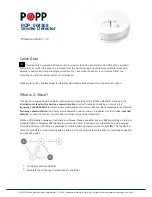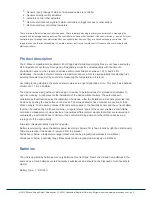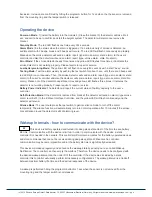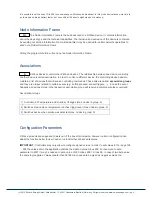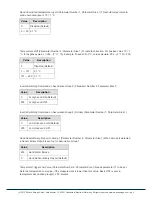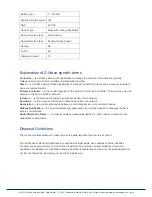
3. Sensors report change of status of measured values to controller
4. Sensors directly control actuators
5. Actuators control other actuators
6. Remote controls send signals to static controllers to trigger scenes or other actions
7. Remote controls control other actuators.
There are two different role a controller can have. There is always one single primary controller that is managing the
network and including/excluding devices. The controller may have other functions - like control buttons - as well. All other
controllers don't manage the network itself but can control other devices. They are called secondary controllers. The
image also shows that its not possible to operate a sensor just from a remote control. Sensors only communicate with
static controllers.
Product description
The Z-Wave compatible smoke detector from Popp detects reliably emerging fires in your house and safes
life and estate of your family. Recoginzing fires primary works free of radioactivity with the help of a
photoelectric sensor, which reacts on smoke particle concentrations between 1.31 % and 2.28 %.
Additionally, the smoke detector contains a temperature sensor, which is used parallelly for detecting fires,
avoiding false alarm and at the same time measuring the temperature in the room.
According to the guidelines, the smoke detector warns via a light signal and a siren. This siren has a defined
volume of 0.11 to 0.165 dB/m.
The device comes along with a modern design. It is easy to install and easy for professional installers to
open for cleaning. A lock prevents the installation of the device without battery. The automatic self-
calibration and self-test increase the reliability of the device. After the installation a manual system test can
be done by pushing the key button on the device. The smoke detector has a wireless connection to the Z-
Wave network. The measured values of the temperature sensor, the humidity sensor and the current battery
level can be read out by a Z-Wave controller. A regular status report of the sensor enables a comfortable
centralized management of many devices. It generates different alarm signals that either are received and
evaluated by a central Z-Wave controller or can control switching actions of other Z-Wave devices (e.g.
turning on/ off the light) directly:
Fire alarm (displayed locally by light and audio)
Battery level warning, when the battery power level drops below 20% (shown locally by light and short audio)
Tamper protection if the device is removed from the bracket
Fall above or below a temperature range (thresholds can be programmed wirelessly via Z-Wave)
Fall above or below a humidity range (thresholds can be programmed wirelessly via Z-Wave)
Batteries
The unit is operated by batteries. Use only batteries of correct type. Never mix old and new batteries in the
same device. Used batteries contain hazardous substances and should not be disposed of with household
waste!
Battery Type: 1 * CR123A
(c) 2012 Z-Wave Europe GmbH, Goldbachstr. 13, 09337 Hohenstein-Ernstthal, Germany, All rights reserved, www.zwaveeurope.com - pp 2

